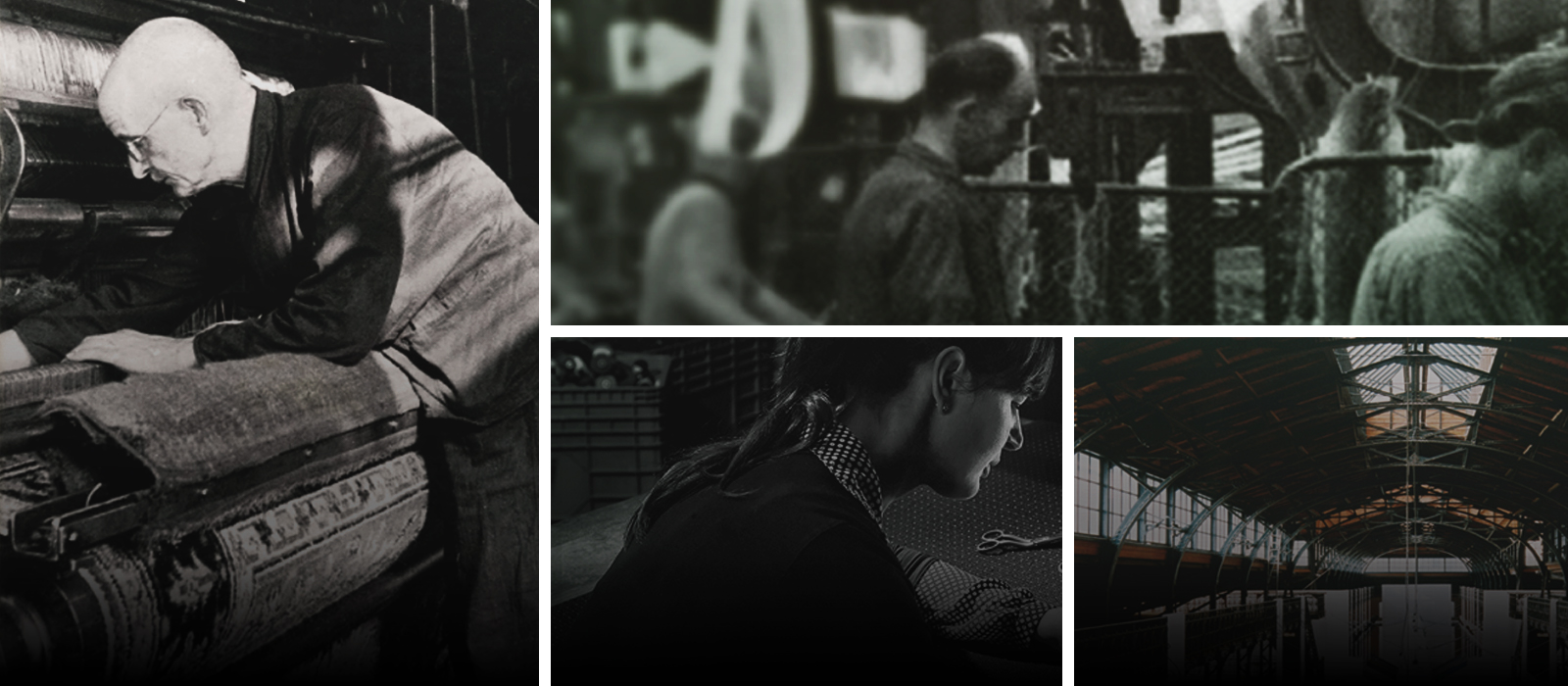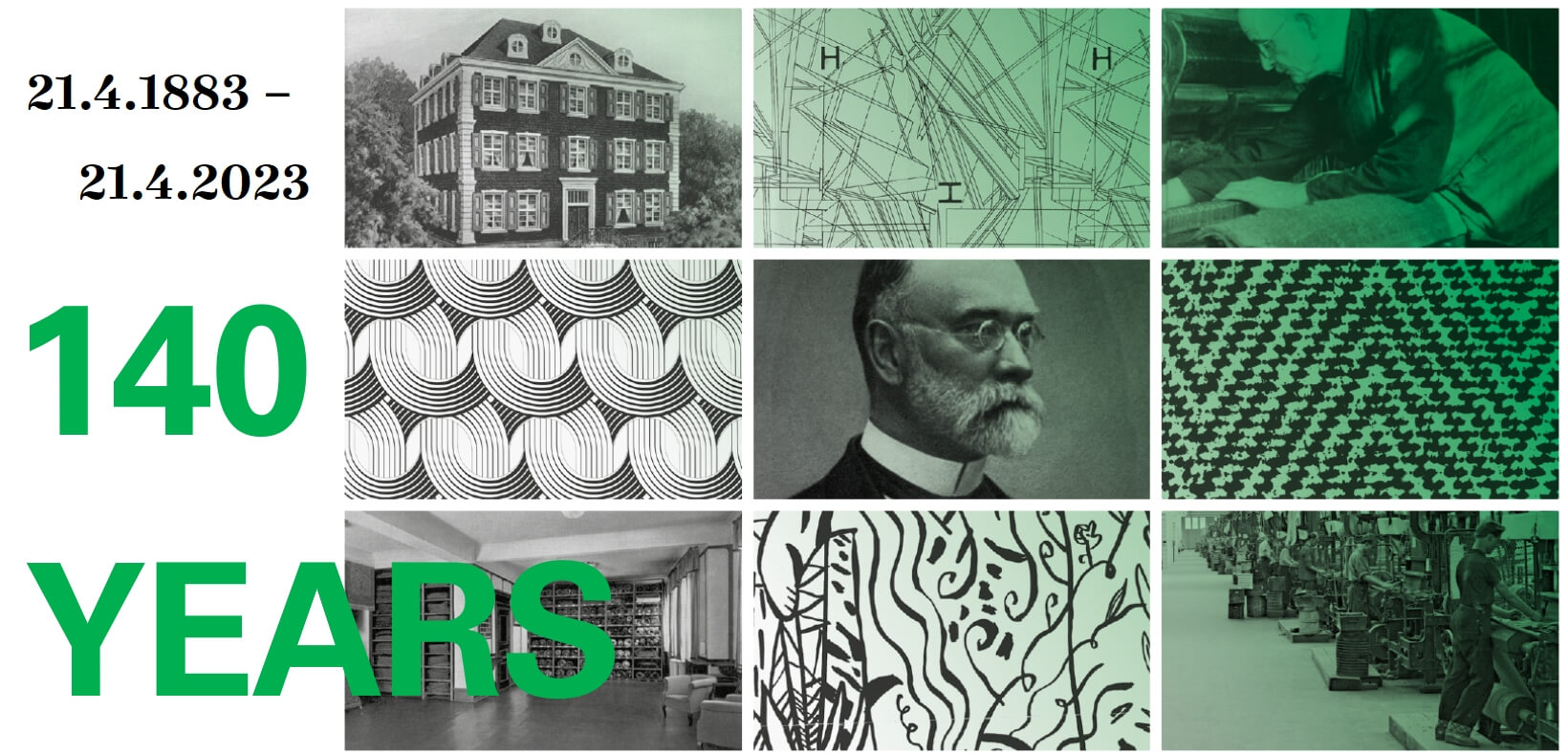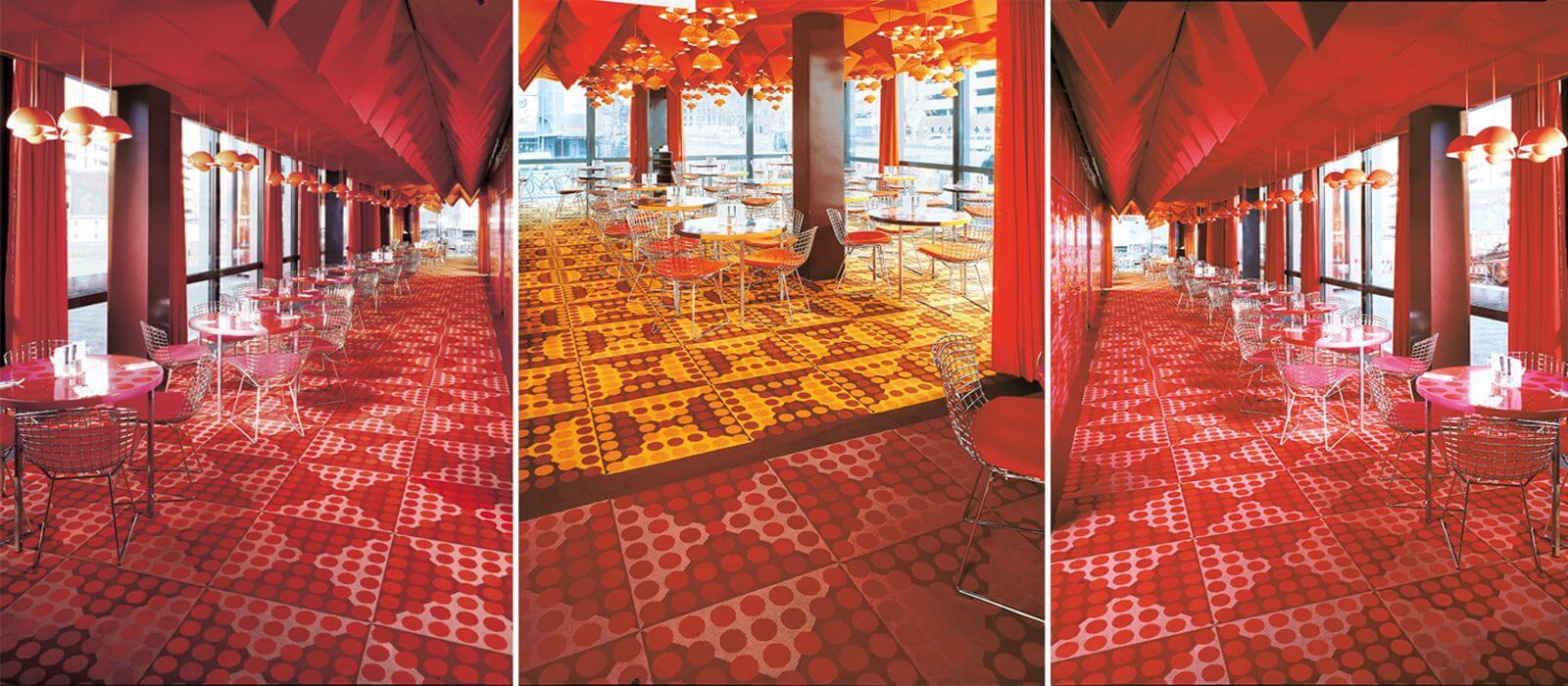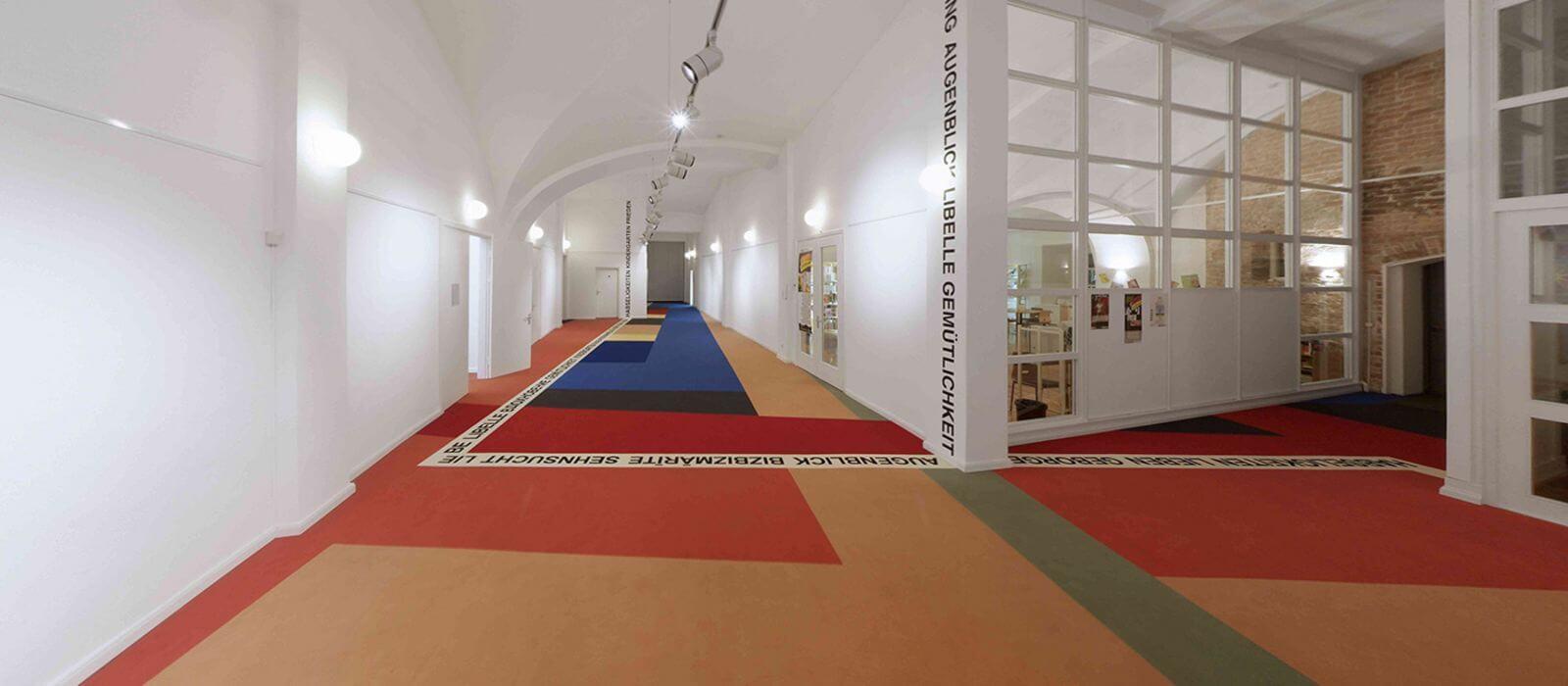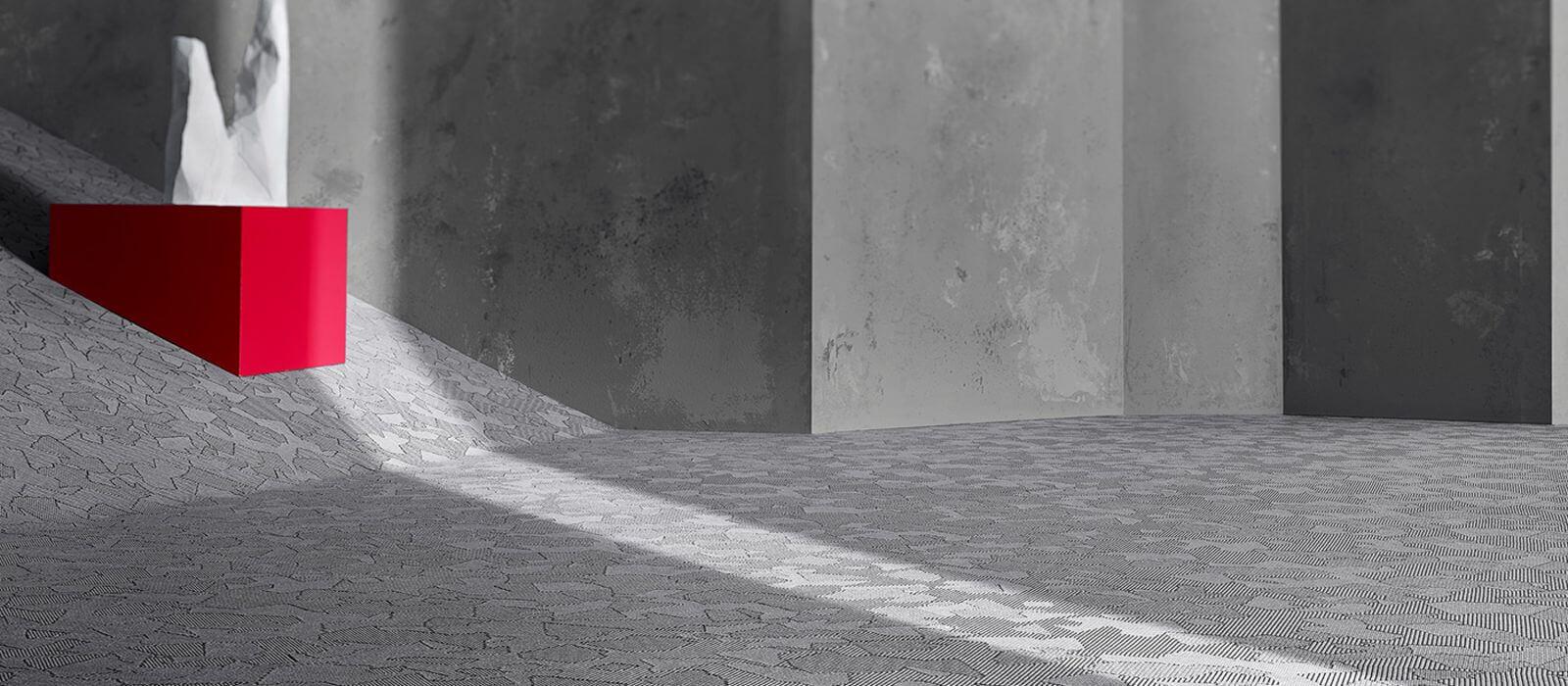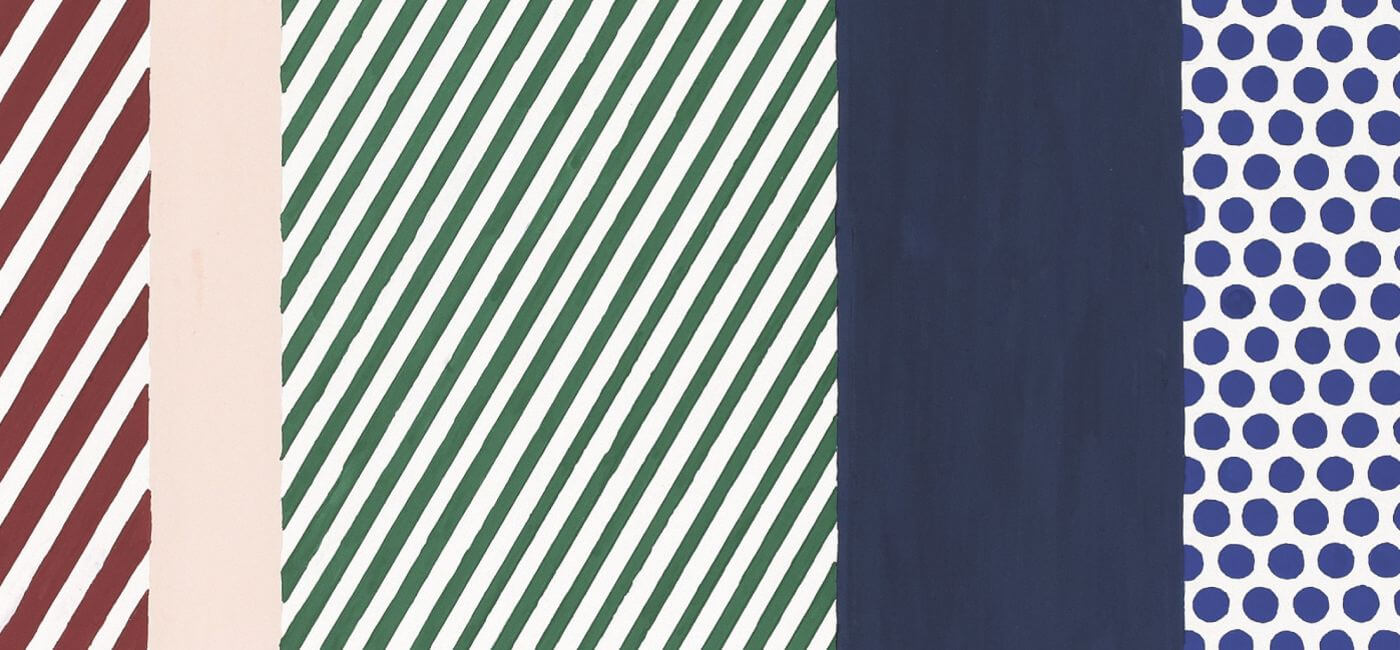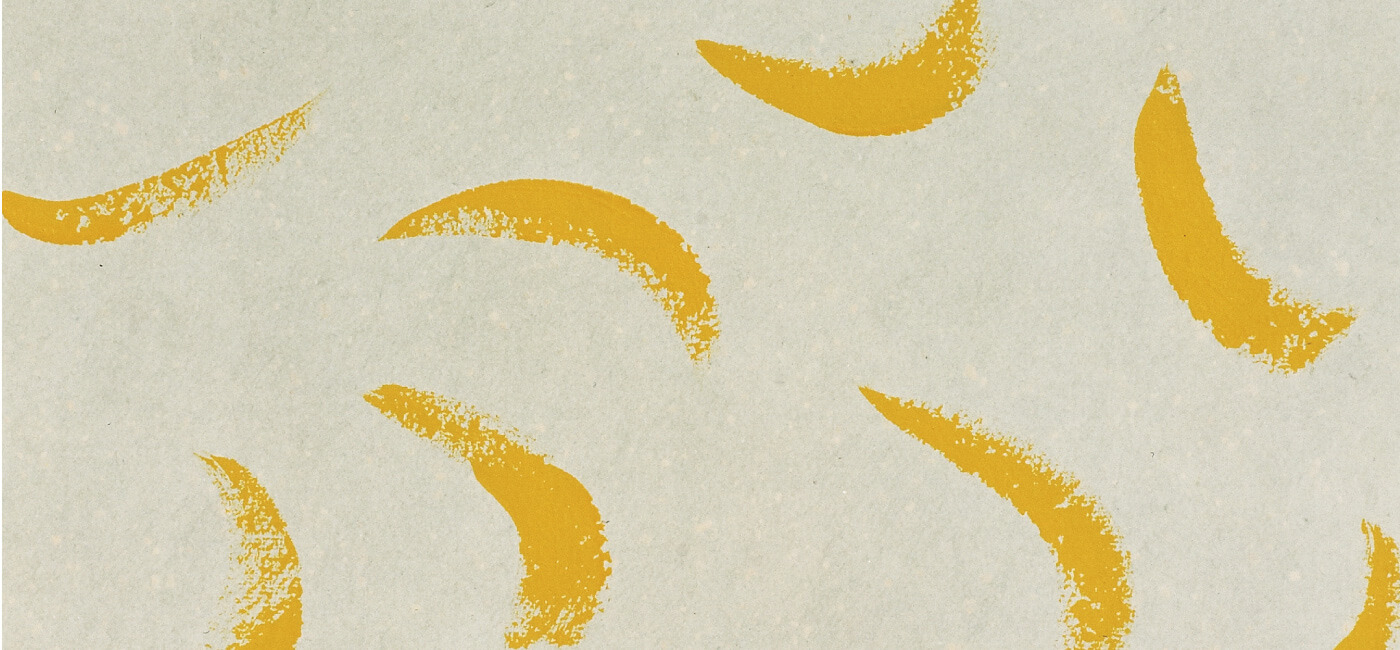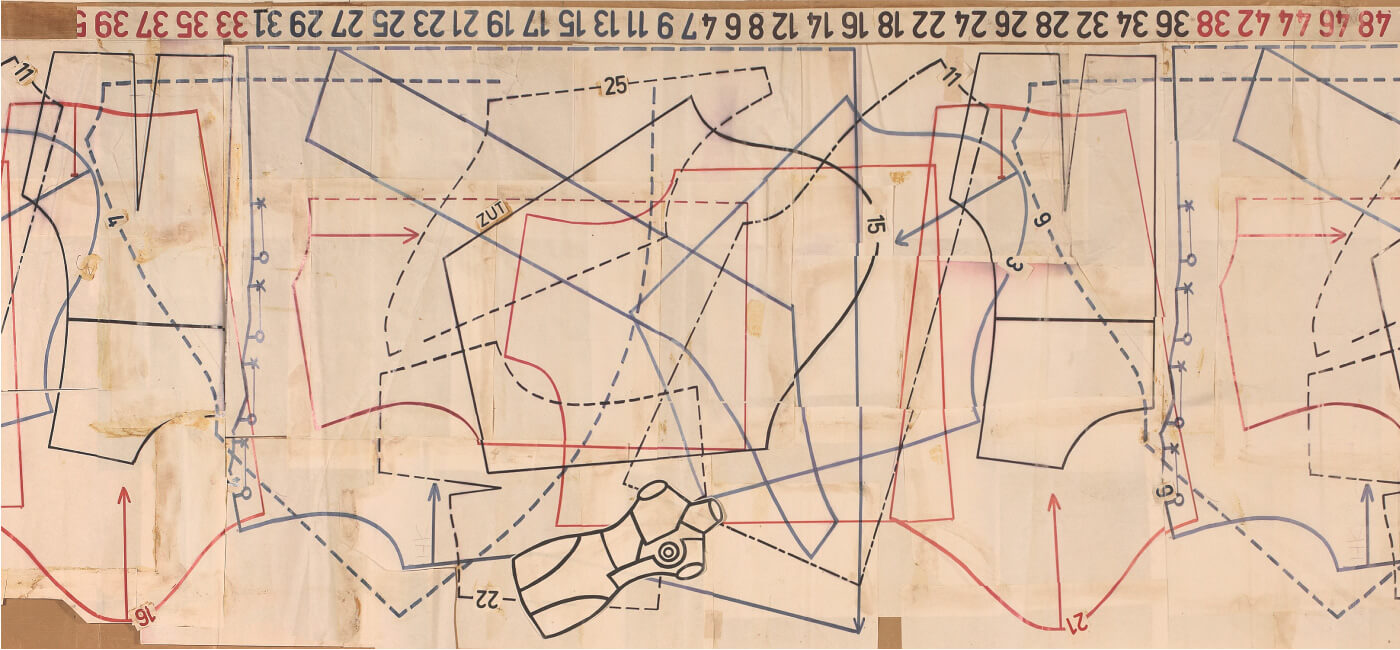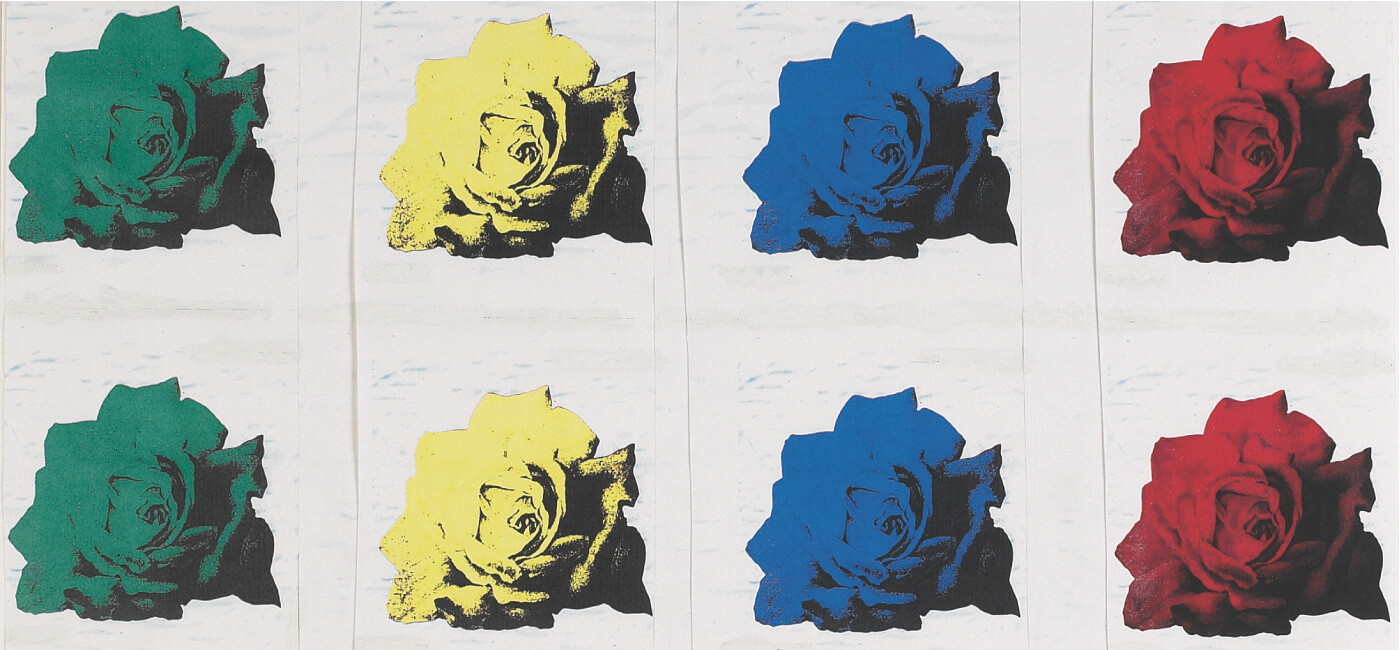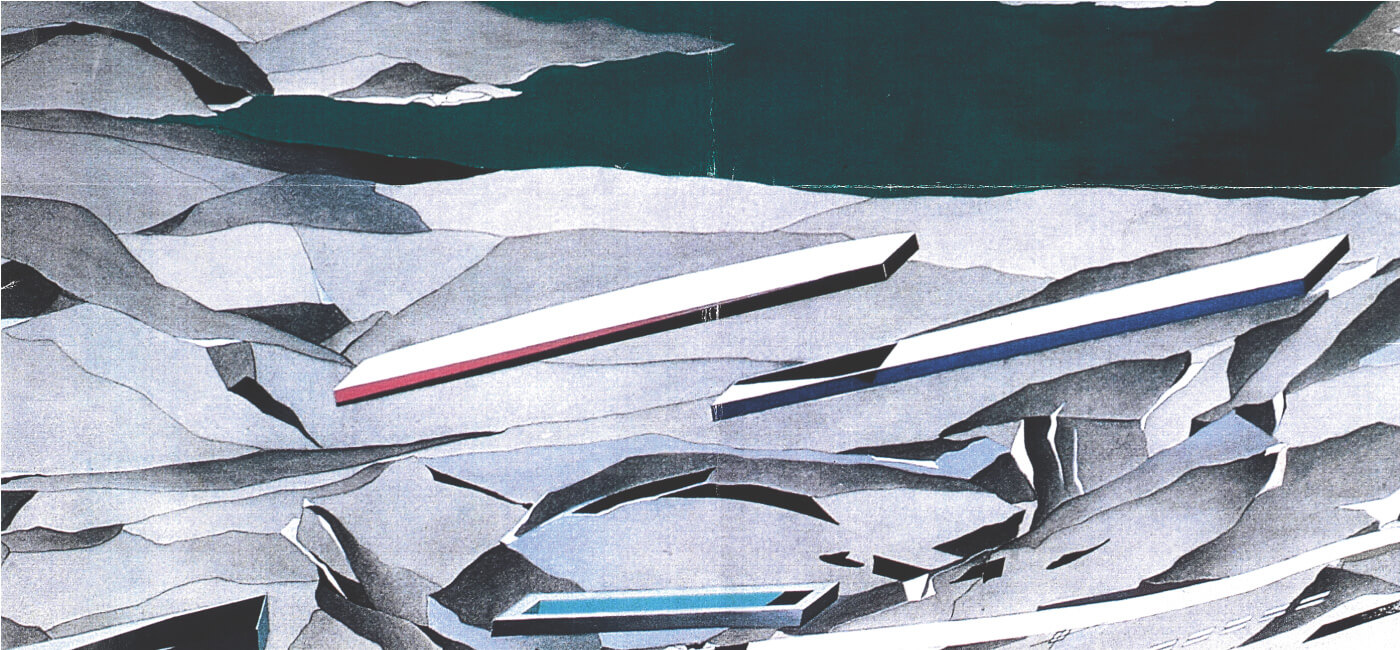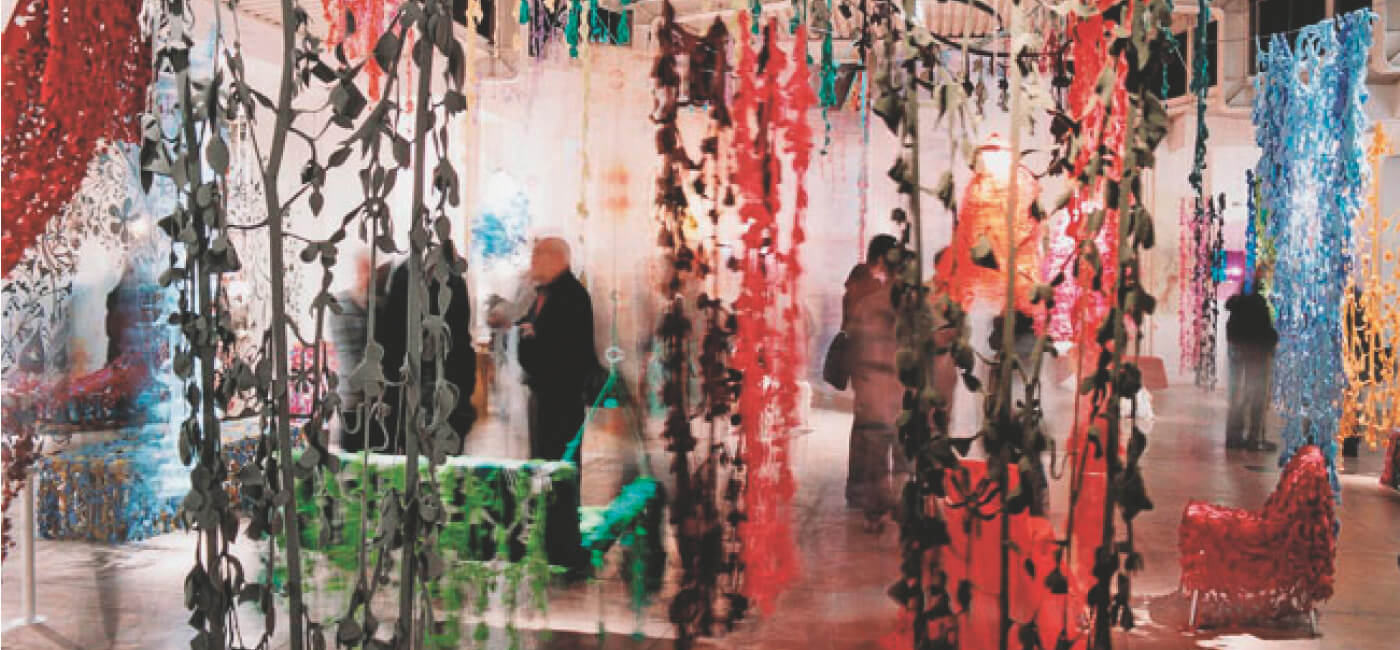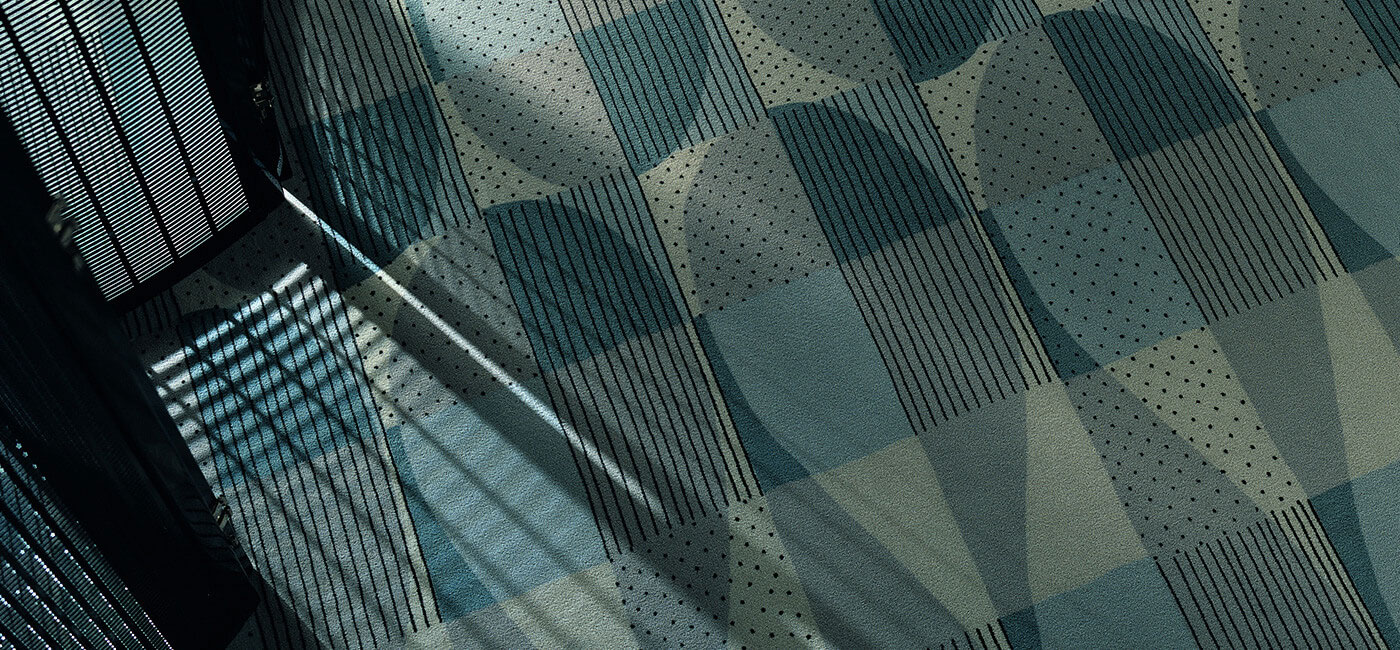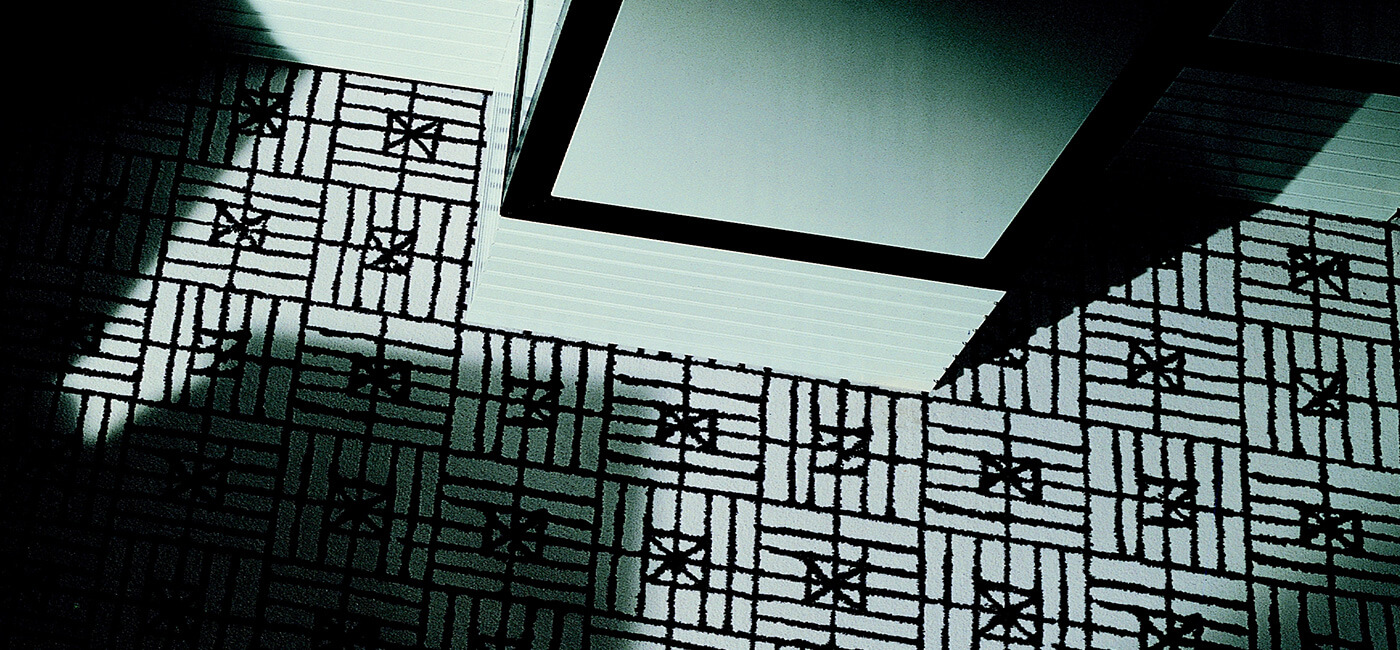Our carpets bring a history
FULL OF PASSION AND INNOVATION.
“Always straightforward and tough as a cogwheel,” wrote August Mittelsten Scheid about his father-in-law, Carl Vorwerk. Who founded the company together with his brother Adolf in 1883, after he had been amazed by the innovation he saw in England in the mechanical carpet industry. He purchased English carpet looms, employed English weavers and master craftsmen, and had German weavers trained in England. “He thought about his carpet factory day and night. Everything else was secondary.” This spirit continues to write the company’s story of success to date.
With the development of tufting technology
a new era in carpeting begins.
Tufting originated in the USA, where voluminous, soft pile yarn was hand-stitched (tufted) into a backing material with a sewing needle. This process was very laborious and cost a lot of time. Later, this idea was further developed in terms of production technology into the highly developed technology for manufacturing tufted carpets, which was only introduced in Germany at the beginning of the 1950s. DAS TEPPICHWERK (formerly Vorwerk & Co. Teppichwerke) was one of the pioneers in Europe. The considerably higher output compared to the conventional loom and a fabric width of up to 500cm quickly ensured a high market share for this product. Many of our textile floor coverings such as carpets, rugs and modular tiles are produced using this process. This is just one of the innovations with which DAS TEPPICHWERK has set new standards in carpet production.
Our carpets have a
written design history with
their design history
Design has always played an important role at DAS TEPPICHWERK (formerly Vorwerk & Co. Teppichwereke). While the start of the company was focused on presenting the beauty of old Oriental carpets, Vorwerk® carpets were later valued above all for their flat, closed surfaces. Today, DAS TEPPICHWERK continues to prove its ability to redefine itself with continually new collections. Carpets have become an object of desire. Research in design has made them a reflection of a person’s personality. And innovative structures have created completely new stimuli for the senses of sight and touch.
Our carpets are influenced by historical design research
with famous artists and designers.
With the change of society and the different way of manufacturing products, DAS TEPPICHWERK (formerly Vorwerk & Co. Teppichwerke) began an experimental phase at the end of the 1980s. Instead of historical patterns, Peter Littmann, the Managing Director of Vorwerk Teppichwerke at the time, focused solely on modern and contemporary design without compromise. For a project in 1989, he brought together nearly 50 internationally known artists, designers and architects to create designs for Vorwerk® carpets. This was followed by collections with designs by masters from the art nouveau era and Bauhaus designers.

